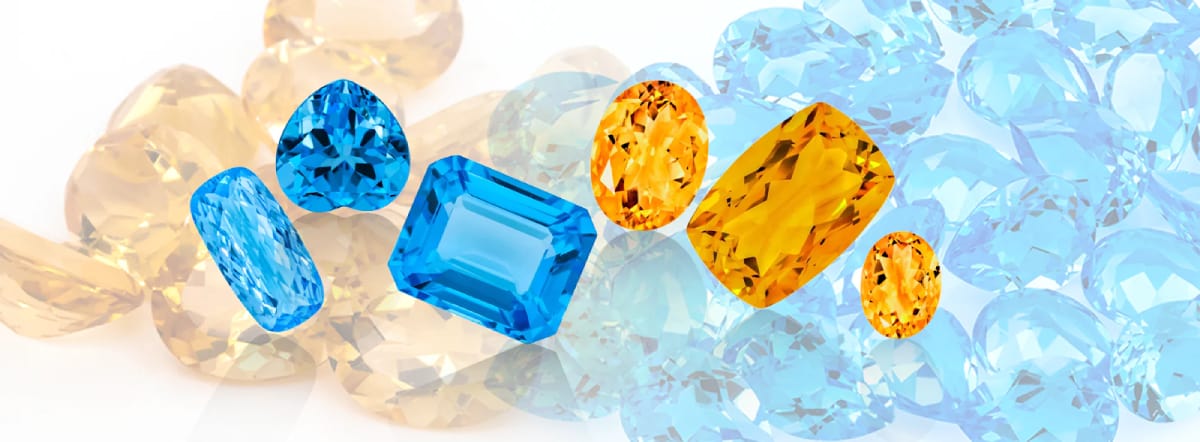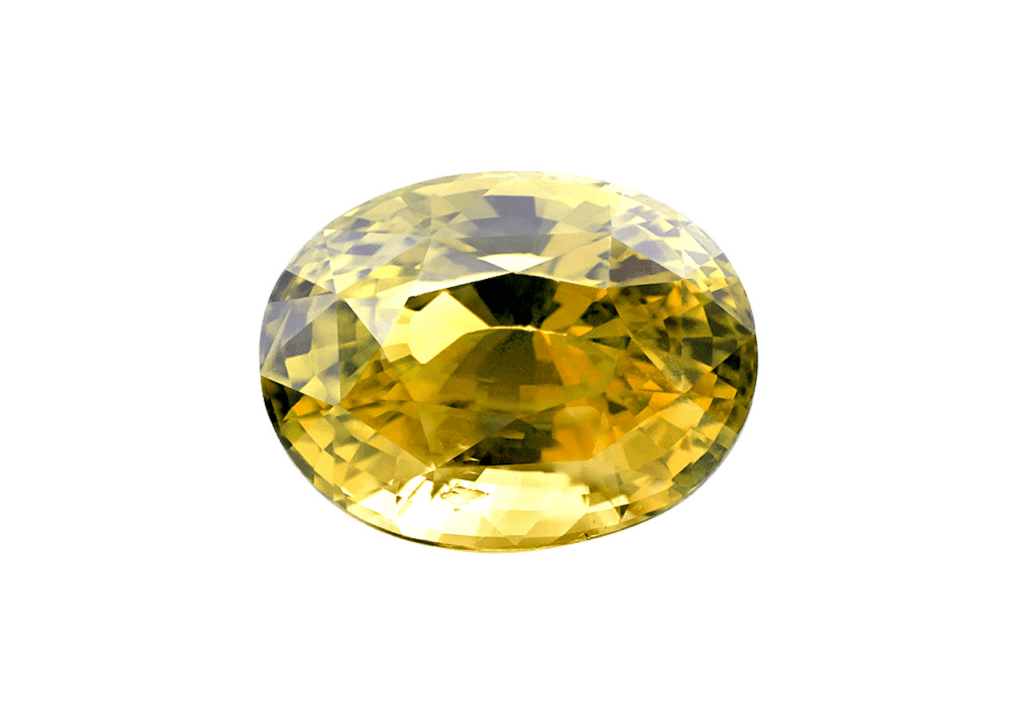November birthstone: Topaz and Citrine. Precious stones with calming energies and power to bring fortune and warmth.
The post November birthstone: Topaz and Citrine. Precious stones with calming energies and power to bring fortune and warmth. appeared first on The Yoga Nomads.

Everyone born in November has been lucky enough to have two November birthstones. Topaz and citrine are beautiful gems with stunning colors and powers believed to grant fortune and wealth to the wearer. Both stones are reasonably priced and affordable, so it is up to gems lovers to only choose the one they prefer.
Topaz comes in a variety of attractive shades, while citrine is famously known for its deep yellow and orange hues.
Interestingly, due to being so similar, the November birthstones have often been confused with each other. Today we discover all about their origin, history, and symbolic meanings.

November Birthstone Topaz
November birthstone topaz comes in a wide variety of colors, such as light blue, yellow, orange, pink, violet, brown, and at times even red. In addition, although yellow topaz is considered the traditional birthstone color, most topaz gemstones are naturally colorless.
This gem has been crowned as November’s birthstone since at least the 15th century, but the National Association of Jewelers made it official in 1912.
History and Symbolism
The history of this birthstone is truly rich and spans centuries. The name “topaz” is believed to originate from the Sanskrit word “tapas,” which translates to “fire.” However, some believe that the October gem name was given after the Greek word Topazios, which is now known as St.Jonas Island, an Egyptian island in the Red Sea. In fact, during that time, the name “topaz” was given to any yellow gemstones.
Ancient Greeks believed topaz gave them immense strength and vitality. From the 1300s to the 1600s, Europeans used to wear a topaz amulet, believing it would break black magic and protect them from evil spells. They also thought the stone could help them discharge their anger.
For centuries, Indians presumed that wearing topaz above the heart would bless them with beauty, intellect, and long healthy life. Finally, blue topaz is a traditional gem given to commemorate the fourth wedding anniversary, while yellow topaz is a gift to celebrate the 23rd wedding anniversary.

Topaz Metaphysical Properties
This November birthstone is considered among the most powerful of other precious stones. It is said to provide emotional balance and protection from greed and grants longevity. However, throughout history, it was also thought to have powerful healing properties.
In ancient times, the gem was believed to have the power to cool water and increase body heat, which is why it was used to fight fevers. In fact, the idea of the November birthstone being able to heal was widespread by one of the few prominent women in medieval church history, Saint Hildegard. Back in the 12th century, she believed this November birthstone could aid weak vision. So they performed healing rituals involving soaking the stone in wine for three days and then applying the wine to the eyes. Another example came from the 15th century when a Roman physician proclaimed that a topaz owned by two Catholic popes could cure symptoms of the plague.
The legends also say that one wearing this birthstone on their left arm would enhance their mental powers, protect travelers and even cure mental illnesses like insanity and lunacy. For a long time, the yellow topaz was respected among people for its ability to help them calm down, get them to behave rationally, and even get rid of nightmares.
Moreover, the famous yellow topaz is also said to bring abundance and wealth due to its yellow color, which symbolizes the riches of gold. In the past, this gem was assumed to attract kindness and generosity from royalty and nobles. In addition, yellow topaz was associated with regeneration, revitalization, and rejuvenation of people’s overall health and well-being.

Topaz’s Origins
There is a lot of historical confusion when it comes to Topaz’s birthstone origins. One is that the word “topaz” was used for any yellow or orange stone, and the second is that the stone comes in many colors, which is why people have confused it with other stones for centuries.
The first topaz, identified as the genuine November birthstone, was found in Germany in 1737. The next was found in Brazil in 1740, but since it was colorless, lead to being mistaken for a diamond. Therefore the gem became an instant addition to the Portuguese crown.
There are also highly prized stones in shades of orange and pink, also known as “Imperial topaz.” It is believed the name derives from the Russian royal family, who insisted on keeping the finest colors of the beautiful November birthstone exclusively for them. Imperial topaz was mined in Russia’s Ural Mountains. On the other hand, another version says “Imperial topaz” dates back to 1881, when Brazilian Emperor Pedro II visited Ouro Preto. The town was next to Brazil’s most prosperous topaz mines, and in honor of the Emperor’s visit, he was gifted with a reddish topaz.
Where is Topaz Found?
The topaz birthstone is a silicate mineral emerging in granite rock and lava flow. The gems used for making birthstone jewelry are commonly found in Brazil, Russia, Utah, Colorado, and Mexico.
Minas Gerais, a Brazilian state where Ouro Preto is located, has been one of the most prominent sources of gem-quality topaz for more than 300 years. The area is now under UNESCO protection and counts as a world heritage.
On the other hand, northwestern Pakistan is famously known for producing pink topaz. Ghundao Hill near Katlang is where the rarest shade of pink topaz with a tinge of violet has been mined since 1972. Some in the gem trade call this birthstone color cyclamen pink.

Topaz Color
Most topaz gemstones, also known as “white” topaz, are naturally colorless. However, the beautiful November stone can appear in a range of colors, and the most popular is yellow. Yellow high-quality topaz is also known as “golden topaz” or “Imperial topaz,” and its color ranges from golden yellow to reddish-orange. Pink topaz and Imperial topaz compete with each other in terms of which one is the rarest and most prized color of topaz birthstone.
In addition, the red and pink shade of topaz occurs from the presence of chromium, while blue is an unnatural shade that results from treating colorless topaz with high-energy radiation. Finally, there is the so-called “Mystic” topaz, made by coating colorless topaz with chemical vapor deposition of a thin artificial film. The procedure forms a metallic rainbow inside the stone that can be described as fascinating since the color changes as the light moves.

How to Take Care of Your Topaz
Topaz rates 8 on the Mohs scale of hardness, but since it still has poor toughness, you have to be careful if you want to avoid chipping or cracking. Also, the thin coating on mystic topaz can easily scratch, so it might not be ideal for everyday wear. Therefore, make sure to store it separately from other harder gemstones.
Warm water and mild soap are safest to clean your topaz jewelry. Steam or ultrasonic cleaners are not preferable as high heat or sudden temperature changes can cause internal breaks in the gemstone.

November Birthstone Citrine
The other November birthstone is citrine, the transparent yellow to brownish orange variety of quartz. However, this precious gem is often mistaken for a topaz birthstone due to its orange-yellow hues. As a result, people assumed the two birthstones had the same powers.
Citrine birthstone as a modern and alternative option for November babies has become increasingly popular. It is a great stone that is affordable and reasonably priced. Moreover, when worn as birthstone jewelry can truly leave a bold statement!
History and Symbolism
The word “citrine” derives from the French word for “lemon,” which kind of fits perfectly with its color range from pale yellow to bright orange-brown. In the past, citrine birthstones used to be a favorite gemstone arranged in colorful Scottish jewelry from the Victorian era. It also became widely popular during the Art Deco movement in the early 20th century.
In ancient times, the citrine birthstone was believed to radiate positive energy, and people called it the “gem of success.” In addition, ancient Greeks carved various iconic images on it, assuming that way they’ll use the maximum advantage of the gem’s powers. On the other hand, Roman priests wore it for protection, along with Egyptians who also believed the citrine birthstone served as a talisman.
A legend says that once it was said that these beautiful birthstones were a gift from the sun. Ancient Egyptians and Romans linked the citrine with the God of the sun, Ra. They believed the stone would bring them happiness and abundance since it cast bright, warm energy like the sun. Lastly, this stunning gem is a traditional gift to celebrate the thirteenth wedding anniversary.

Citrine Metaphysical Properties
The stone, believed to have the sun’s powers and a symbol of positivity and hope, is also associated with numerous beneficial properties. For one, it is said to calm and comfort, making it ideal to have it on you if you feel stressed or worn out. Moreover, the legends say citrine has physical healing powers, which can be obtained by wearing the gem.
In the ancient past, these November’s birthstones were worn as protection against snake venom and an amulet to shield them from evil or sinful thoughts. Citrine gems are said to bring mental clarity, emotional balance, and inner peace. Nowadays, those with November birthdays and gem lovers choose the stone for its powers to foster success, prosperity, and abundance.

Where is Citrine Found?
Today, most citrine results from the heat treatment of amethyst. In addition, the November birthstone sources are found in Brazil, Bolivia, Spain, Madagascar, Mexico, and Uruguay.
Bolivia’s Anahí Mine is one of the most prominent natural, unheated citrine sources. Moreover, it carries quite a romantic story. Namely, the Spanish conquistador found the Ayoreos tribe of Paraguay in 1600 and fell in love with their princess, Anahí! So when the two got married, they handed him the mine as a part of her dowry. The mine was lost for almost three centuries when it was discovered again in the 1960s.
The Anahí mine delivers a unique combo of amethyst and citrine in the same stone, and when the two colors show together, the gem is known as ametrine. Lastly, the citrine birthstones produced at this mine are known to have one of the most beautiful colors ranging from range-yellow to brownish/greenish yellow.
How to Take Care of Your Citrine
Your favorite gemstone citrine is 7 on the Mohs scale of hardness. According to the November birthstone guide, citrine has good toughness, which is why it is perfectly safe to wear it daily. In addition, ultrasonic cleaners are safe, but avoid using steamers as high heat could cause the gem to crack. Lastly, warm, soapy water is always the safest way to clean and care for your citrine birthstone.
FAQ
Why does November have 2 birthstones?
In 1912, the Jewelers of America made an official list, and they added modern birthstones based on what is accessible and easiest to sell in large amounts. So this is the reason why November has two birthstones. In addition, topaz is the traditional version, and citrine was added as a more affordable option.
What color represents November?
Yellow is the primary color of November, but gold and red are also considered November’s colors. Reflecting the warm and rustic autumn hues, yellow derives from the two birthstones for this month, topaz and citrine, and it is said to symbolize feelings of joy, optimism, energy, growth, and happiness.

 Troov
Troov 
































